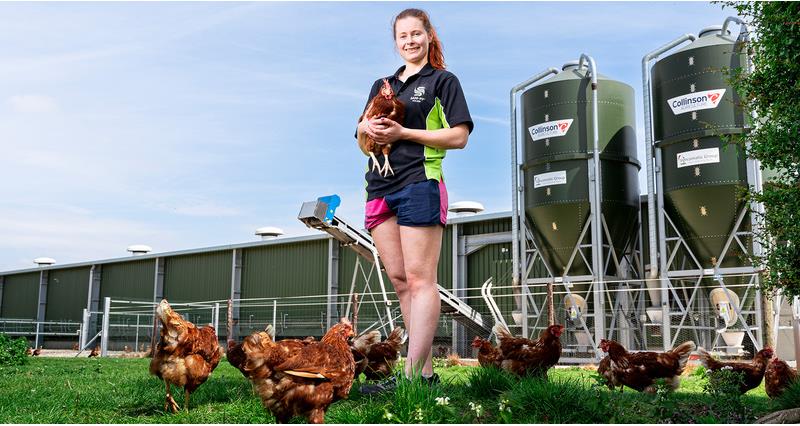Keeping more than 128,000 free-range laying hens across four sites means that electricity needs for Ivory and Caleb Arden’s Chirpy Egg Company are constantly growing, which is why they’ve switched to solar panels and battery storage to future proof the business against rising energy costs.
The family diversified its Lincolnshire mixed arable, potatoes, and livestock venture into poultry in 2015, growing from their first flock of 30,000 free-range laying hens to 128,000 across four sites, all within nine years.
While their farm has already invested in renewables such as wind turbines, tree planting and combined heat and power units, the combination of solar panels and battery storage is their latest step towards net zero, writes NFU campaigns adviser Charlotte Gibbs on the NFU web site.
Having had solar panels across their sites for some time, Ivory and Caleb decided to invest in battery storage when building their newest site, with a combination of rising energy prices and the loss of grants and subsidies making the decision easy.
“A few years ago, when the energy prices spiked and egg prices were down, we were lucky because we’d already forward planned and had renewables in place,” says Ivory, whose business HQ is a Newton on Trent, north-west of Lincoln.
“Without them, our electricity would have been an added cost on top of all that change. We would be suffering and I know a lot of people did suffer,” she added.
“We had seven years’ worth of data on our energy consumption, so we could work out what we were trying to achieve before the shed was built,” says Caleb. “We scaled to what we thought we needed on the solar side and thought that it made sense to have batteries.
“Solar is the obvious thing to do, but people might not invest in batteries as well, as it’s still fairly new and can appear as a mediocre return. I think it’s better than mediocre,” he added.
Across their poultry site, 162KW of energy (at peak) from 352 solar panels is generated directly to the chicken sheds. Overflow solar energy is stored in the batteries, which have 46.4KW of capacity, and the energy is then used at night.
Once the batteries are full, any additional energy produced is exported and sold to a local energy company, meaning 57% of the business’s own energy has been used to run the chicken sheds, and a further 37% has been exported back into the grid.
From planning to installation, the project took under six months to complete. The birds’ welfare was their main priority when installing the batteries, and they were mindful of the potential risks of biosecurity and interference with back-up generators and other power sources.
Ivory and Caleb combated this by building on a new site where no birds were present while the extra people were working there. They also champion working with trusted professionals for installation and maintenance.
Caleb said: “Go out and get plenty of quotes as it can vary massively. We chose a local company who we have worked with in the past. Go with people who you can trust, because it’s so important to get it right the first time.”



